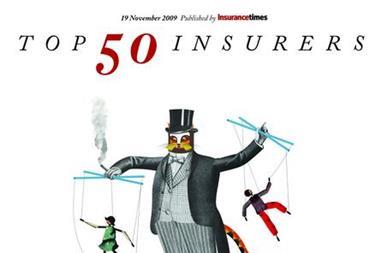Insurers must improve their underwriting results. But are they doing enough?
The non-life insurance industry’s underwriting performance was disappointing last year. Although it reduced its underwriting loss to £165m compared with £315m in 2007, and lowered its net combined ratio to 100.7% from 101%, these minimal improvements were, in our opinion, unsatisfactory, given that flood losses had severely impacted performance in 2007 and the weak investment environment should have put a lot of pressure on the industry to underwrite profitably. On a more positive note, however, pre-tax profits grew to £5.8bn from £4.7bn, and the pre-tax return on equity rose to 15.8% from 13%.
Of more concern to us was the accident year performance. While the accident year net combined ratio fell 4.1 percentage points, it was still high at 104.9%. For the fifth successive year, the industry managed to supplement its accident year performance with prior years’ claims reserves releases, albeit at a lower absolute and relative level in 2008 (£1.6bn) than in 2007 (£2.5bn). As the ability to release reserves from prior years’ claims continues to diminish, as we believe it will, reported results will move closer to accident year results. Given the poor accident year performance in 2008, this is not a prospect to be relished.
So, is the industry improving? While there are signs of premium rate increases above the rate of claims inflation, they are not enough for us to feel confident that 2009 will be significantly better on an accident year basis. Furthermore, on a reported year basis, there may be no improvement if
reserve releases decline, as we expect. All of which will confirm what we all know already – that the UK non-life insurance industry is a very competitive world indeed.
Turning our attention briefly to the industry balance sheet, the good news is that it remains conservatively invested: cash accounted for 13% of total assets and bonds for 45% at year-end 2008, with equities and property accounting for just 9% and 1%, respectively. Moreover, as a percentage of adjusted shareholders’ funds, property and equity investments fell to 31.7% from 35.8% a year earlier, which is its lowest level in the past 10 years. This means that the exposure of the industry to market risk in relation to its capital base is relatively low.
Nevertheless, while this has provided the industry with a degree of resilience in its solvency, the solvency ratio (net written premium as a percentage of adjusted shareholders’ funds) deteriorated quite sharply in 2008 to 109.1% from 92.2% in 2007. We would view further deterioration in this ratio without evidence of improved underwriting performance negatively.
Understanding the loss reserves to net written premium ratio
Assessing the adequacy of a non-life insurer’s loss reserves is a critical element in understanding its financial health. In the absence of an actuarial opinion, a simple tool available to financial analysts is to look at the scale of the loss reserves in relation to the net written premium. This gives an insight into the level of reserves established to meet past liabilities to which the insurer is exposed. In essence, all else being equal, a rise in the ratio over time suggests deterioration in the quality of the underwriting and vice versa.
The ratio must be used with care, however. It has validity for a particular insurer across time as long as the business mix has not changed materially – different lines of business will have different ratio levels.
Similarly, any material change in reserving accuracy or policy will distort the trend. Comparisons between insurers are also best made with those that have similar books of business. As usual, the ratio is a means to an end, not an end in itself, and is just as useful for the questions it raises as for the questions it answers.
Furthermore, it is important to distinguish between premium growth that is purely volume driven and premium growth that reflects an increase in the price of the risks underwritten, as this can lead to misinterpretation of the ratio: for example, an increase in the volume, but not in the premium charged per unit of risk, will lead to a rise in the denominator, while the numerator’s growth may lag behind, leaving the ratio temporarily at a misleadingly lower level. On the other hand, growth as a result of higher pricing will also lower the ratio, but on a more permanent basis.
Hosted by comedian and actor Tom Allen, 34 Gold, 23 Silver and 22 Bronze awards were handed out across an amazing 34 categories recognising brilliance and innovation right across the breadth of UK general insurance.














































No comments yet